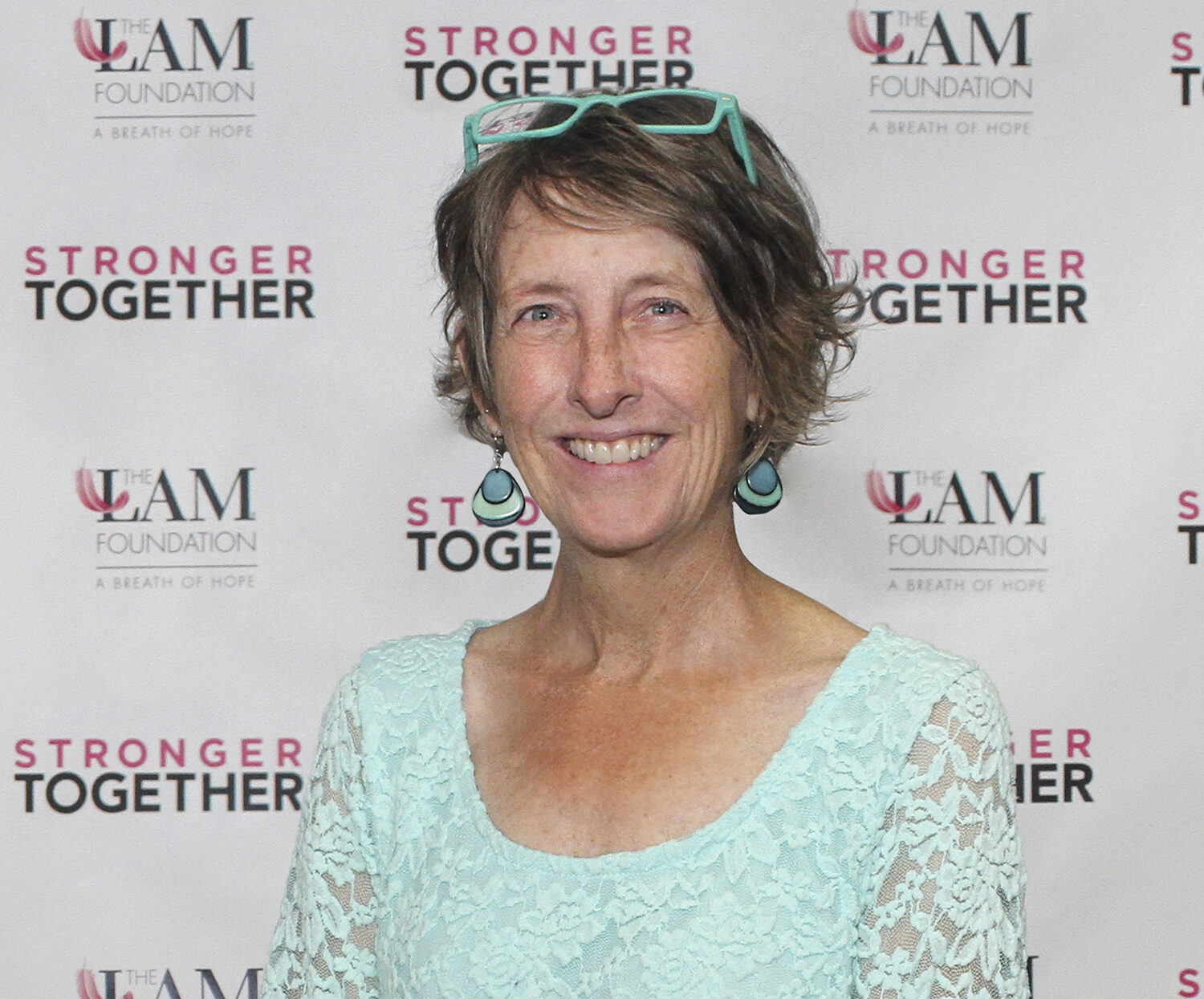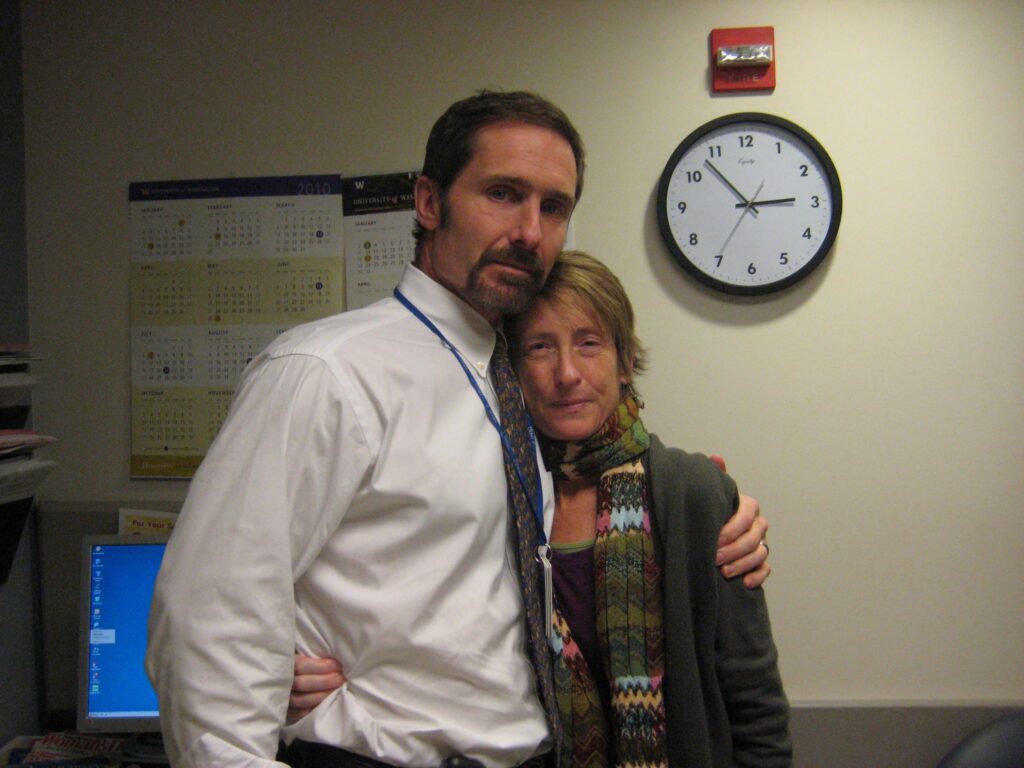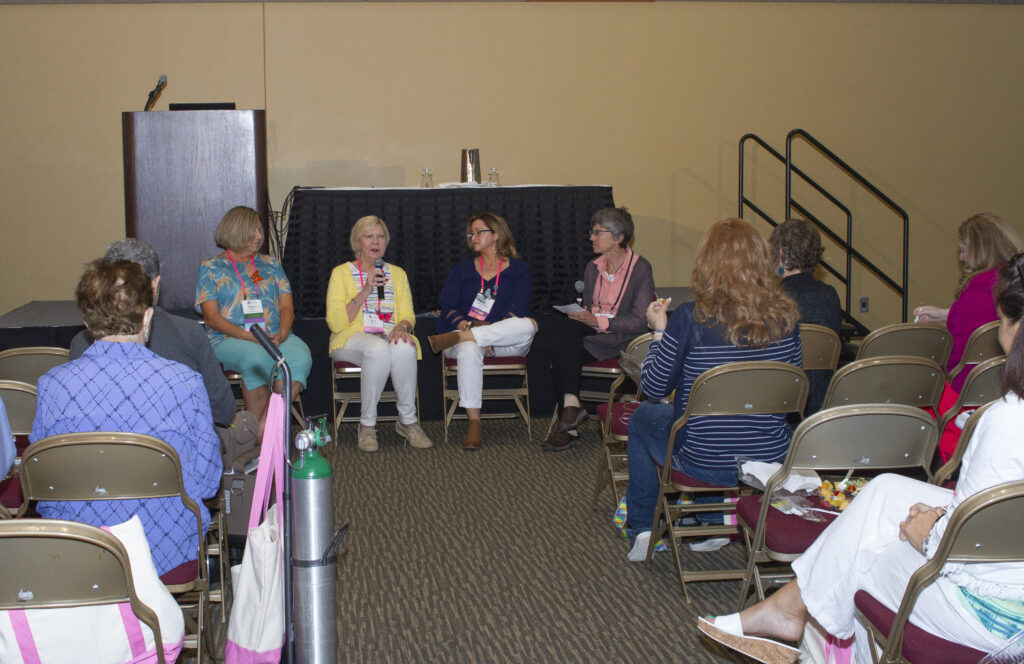Drawing a Circle of Hope

A resource offered by The LAM Foundation, the Circle of Hope Transplant Support Program was established in 2018. The program connects LAM patients who are considering lung transplantation with those who have undergone the procedure, as well as with experts in the field.
Program Coordinator Sharlene Dunn shares her own journey to transplantation, the story behind the Circle of Hope, and the many inspirations she has found along the way.
What was it like for you to go through the lung transplantation process?
My transplant journey began in 2003, about seven years before I officially listed for transplant. My pulmonologist had encouraged me to go through the evaluation process and list for transplant. At that time, rank on the waiting list was determined by length of time spent on the list, rather than by the Lung Allocation Score (LAS) in place today.
However, I didn’t feel at all ready to make that decision. So I stepped back from the decision and did not revisit it until six years later when the writing was on the wall, so to speak—my lung function had significantly declined, my daily activity was severely restricted, and my weight and strength were no longer at a functional level. Because my lung function was so low, starting Rapamune off-label was not a viable option for me. In short, I could no longer deny my need for a lung transplant.
Throughout this process—and during the year leading up to listing—I felt a great deal of fear, trepidation, and ambivalence. I was especially fearful of the unknowns. This was also a lonely time for me, not all that different from when I was first diagnosed in 1993, prior to finding The LAM Foundation. I now found myself in an even smaller subset of an already very small set of women who are diagnosed with LAM, and I craved real, honest conversation with others who had already navigated the transplant experience.
Thankfully, Sue Byrnes and Dr. Frank McCormack put me in touch with a few amazing women—women diagnosed with LAM who were living wonderfully full post-transplant lives—and the conversations began. Right alongside the difficult emotions, a bit of excitement and hope gradually found its way into my thinking.
What if the transplant were a success? What if I could extend my life? What if I could attend my daughter’s college graduation? What if I could again fully participate in life with not only my mind and my heart, but also with my physical being?

How did the idea for the Circle of Hope Transplant Support Program come about?
The need to expand The LAM Foundation’s support to women facing transplantation was first presented to Sue Sherman, our CEO, by Sally Lamb, our then-Patient Services Director. Sally recognized the unique concerns and challenges presented to our patients in need of a lung transplant. The idea percolated in Sue’s mind, and over time a plan began to take shape.
In late 2015, Sue reached out to me, asking if I would be interested in being involved with such a program. I didn’t skip a beat in saying yes! Given my own experiences, I had no doubt this program was needed and that it would be a valuable addition to our patient support services. Early the following year, I drew up a preliminary vision statement and timeline for implementation.
In 2017, Katie Jensen, our Development Director, and Anne McKenna, who at the time was our Patient Services Director, took the project to the next level and ultimately worked their grant writing magic. The resulting grant from Global Genes enabled us to launch the Circle of Hope Transplant Support Program in 2018. Like many projects within The LAM Foundation, the program has been a labor of love by many.
What are the biggest needs that the program addresses?
The Circle of Hope program addresses that craving for real conversation—a connection with other women who have been through the transplantation process, who have navigated both the most wondrous and the most difficult of days. It’s all about support and education.
In addition to providing patient support, the program also supports our dedicated researchers. By educating patients about the opportunity to donate their explanted lung tissue at the time of transplant, we are able to provide our researchers the essential resource they need to find a cure for LAM: fresh lung tissue.
Our women with LAM have always been eager to participate in research, so it’s no surprise that our patients have responded generously and enthusiastically to this opportunity. Tissue donation is a powerful experience and a tremendous gift to the entire LAM community.

How has the program impacted women with LAM so far?
Since launching the program just under a year ago, we have already touched many lives. Our Circle of Hope participants now cover the full range of the transplant process—we have women who are currently in evaluation, women who are through evaluation and waiting on the list, and women who are less than a year post-transplant. Some of our women were not previously involved with The LAM Foundation, but reached out when we announced the Circle of Hope.
The stories that have evolved from these connections fill my heart on a daily basis. When I receive an email or a phone call from a woman thanking me for the program, well, it just doesn’t get any better than that. As a beautiful surprise, I have also received those same messages from our mentors, expressing their gratitude for the opportunity to be involved and to share with others what they’ve learned and experienced. Our mentors are a dedicated and compassionate group of women, and they are making a difference every day. Without them, we wouldn’t have a program.
I’ve always believed in the power of connection. We have witnessed this power for years at our regional gatherings and, of course, LAMposium. Now, to witness this power spreading within our transplant population—it almost leaves me speechless. I am beyond-words blessed to be a part of the Circle of Hope.